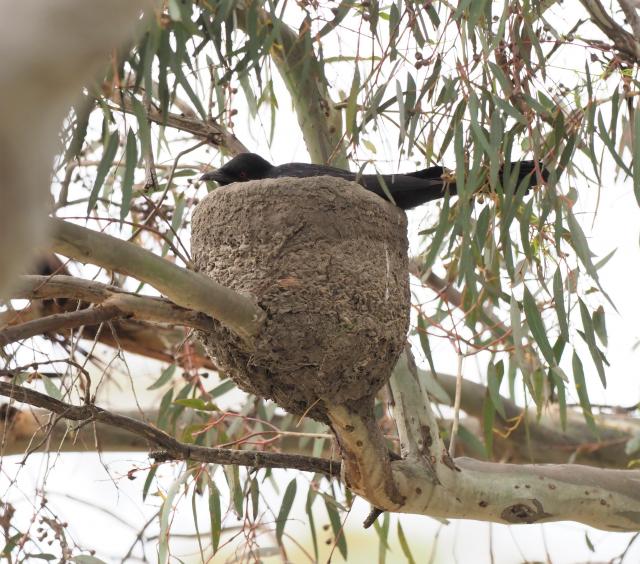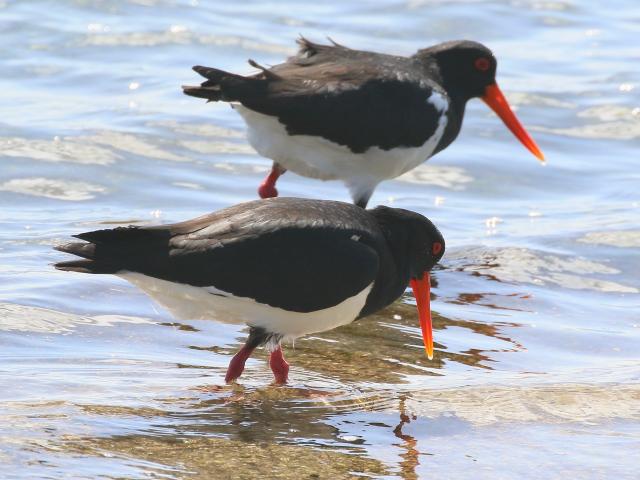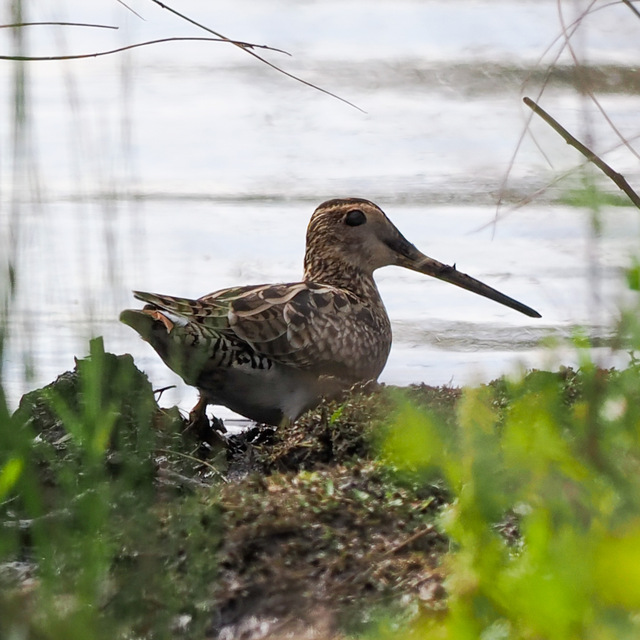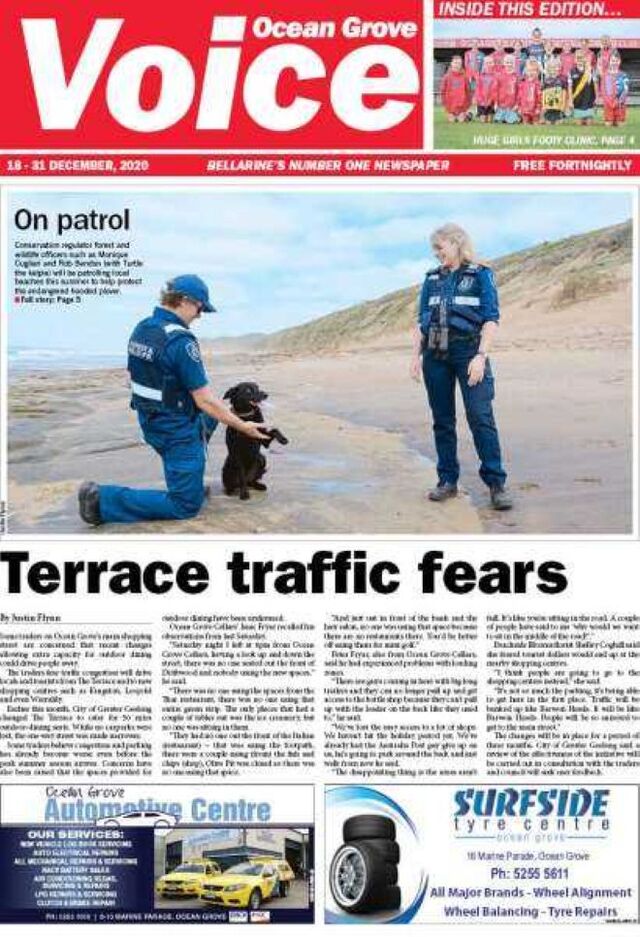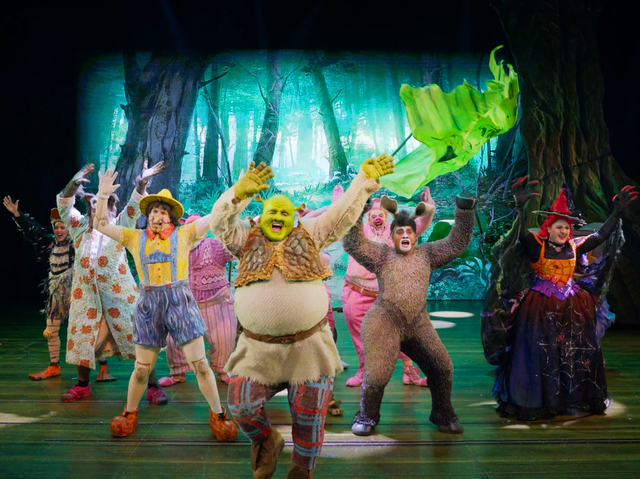I’m writing this a long way from the Bellarine – Trinity Beach, near Cairns in fact.
After the comprehensive victory by Geelong in the AFL premiership I needed a few weeks of rest and relaxation to recover.
Before venturing to Cairns I had the pleasure of talking to the Ocean Grove Probus club about local birds.
Fortunately, there’s been some bird activity around the Bellarine, with reports provided by a few Voice readers.
Kevin sent me a few emails, and in one he described watching two little ravens attack and kill a silver gull in Queenscliff in the shallows of Swan Bay. It is very confronting to see animals kill each other, and I was a tiny bit relieved that the ravens killed a silver gull and not an orange-bellied parrot.
On a brighter note, Kevin also took some lovely photos of galahs, a grey fantail, little corella, singing honeyeater and pied oystercatchers at Queenscliff.
Kevin noted that it was pleasing to see two separate pairs of pied oystercatchers on the beach around Queenscliff. One of these birds had an orange tag (C21) on the right leg and an aluminium band on the left.
The pied oystercatcher population of Australia is only about 10,000 individuals, with approximately 1500 in Victoria.
The Victorian Wader Study Group has been conducting a study of them in Victoria since 1979, and oystercatchers have been banded at various locations in Port Phillip Bay, Western Port and the Corner Inlet.
The banding system initially involved individual birds having two colour bands placed above a metal ABBBS band on one leg, and three colour bands placed on the other leg as a unique combination, allowing individual birds to be identified in the field.
However, more recently they have an engraved leg flag applied. If Kevin sent his observation to the Victorian Wader Study Group, they would be able to inform him of the age of the bird that he observed due to the presence of the individual banding.
Alan sent me an email which had some good and bad news in it. Alan has been watching a pair of tawny frogmouths nesting somewhere on the Bellarine, and he told me that sadly he found a dead tawny chick under the nest.
Tawny frogmouth chicks are very curious and if it’s a windy day they sometimes move too close to the edge of the nest and are prone to falling out.
The good news is that there is at least one healthy looking chick still in the nest, perched precariously on a branch and wedged in by its father.
Alan also sent me a photo of a white-winged chough nest that he spotted recently in the Mallee. These amazing birds construct mud nests like magpie larks but on a much bigger scale, and they certainly are a work of art.
Alan also reported that the four cygnets at Blue Waters Lake are very active and well, which is great to hear. Alan also reported that there is plenty of nesting activity at The Basin with eastern rosellas and rainbow lorikeets nesting in tree hollows, and another tawny nest in that vicinity.
Regarding Cairns, I have been very fortunate to see a few new birds, including cassowaries, brown-backed honeyeaters, double-eyed fig parrots, and an Asian dowitcher which is a migratory shorebird that is hanging out on the Cairns Esplanade.
I also saw two birds that I have been chasing for quite some time – a little kingfisher and a Pacific baza.

